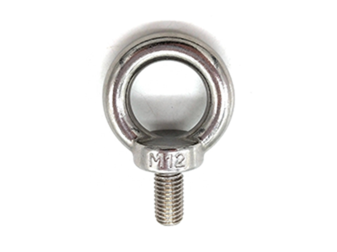Kas . 29, 2024 17:17 Back to list
Understanding the Uses and Applications of Threaded Rods and U Bolts in Construction
Understanding Threaded Rods and U-Bolts Essential Components in Modern Construction
In the realm of modern construction and engineering, the reliability and efficiency of fastening solutions are paramount. Among the myriad of fastening components available, two notably important items are threaded rods and U-bolts. Both components play crucial roles in various applications, ranging from basic construction projects to specialized engineering tasks. This article delves into the characteristics and uses of threaded rods and U-bolts, highlighting their significance in securing structures and systems.
What is a Threaded Rod?
A threaded rod is a long, cylindrical metal rod with continuous threads running along its length. These threads enable the rod to be securely fastened to nuts or other threaded components. Threaded rods can be made from various materials, including steel, stainless steel, and plastic, making them versatile for different environments and applications. The dimensions of threaded rods can vary in diameter, length, and thread pattern, allowing them to fit specific project requirements.
Threaded rods are often used in construction for suspending ceilings, securing beams, and anchoring structural elements. They offer an adjustable solution that can accommodate various heights and distances, making them invaluable in both temporary and permanent installations. Moreover, due to their robust construction, they can withstand significant loads, ensuring the stability and safety of numerous structures.
The Role of U-Bolts
U-bolts, as the name suggests, are shaped like the letter U and feature two threaded ends that allow them to be secured with nuts and washers. Typically made from steel or other durable materials, U-bolts are designed to provide a strong clamping force around cylindrical objects such as pipes, poles, or beams. Their ingenious design allows for easy installation while ensuring a secure grip.
Commonly used in plumbing, automotive, and structural applications, U-bolts are particularly popular in situations where a secure hold on a round object is essential. For instance, they are frequently employed to mount pipes to walls, secure axle assemblies in vehicles, and even in the support of electrical conduits. Their versatility and strength make U-bolts a favored choice among engineers and constructors alike.
threaded rod u bolt

Applications and Benefits
Both threaded rods and U-bolts offer distinct advantages that contribute to their widespread use in construction and engineering
1. Strength and Durability Both components are designed to withstand heavy loads, making them ideal for structural applications. Their resistance to corrosion, particularly when made from stainless steel, further enhances their longevity and reliability.
2. Versatility The versatility of threaded rods and U-bolts allows them to be used in a wide range of projects, from residential construction to industrial machinery. Their ability to accommodate various sizes and configurations makes them suitable for customized applications.
3. Ease of Use The straightforward installation process of both components allows for quick assembly and disassembly, which is particularly beneficial in projects requiring adjustments or reconfigurations.
4. Cost-Effectiveness Given their durability and strength, using threaded rods and U-bolts can often result in lower overall project costs by reducing the need for frequent replacements.
Conclusion
In summary, threaded rods and U-bolts are indispensable components in modern construction and engineering. Their unique designs, coupled with their strength and versatility, make them essential in ensuring the stability and safety of various structures. As industries continue to evolve, the importance of reliable fastening solutions like threaded rods and U-bolts will only grow, solidifying their place as foundational elements in the world of construction. Whether you're a seasoned engineer or a DIY enthusiast, understanding the functions and benefits of these components can greatly enhance the effectiveness of your projects.
-
The Ubiquitous Reach of DIN934 in Application Realms
NewsMay.16,2025
-
Exploring Different Bolt Types
NewsMay.16,2025
-
Cracking the Code of Sleeve Anchor Mastery
NewsMay.16,2025
-
Clamp Design Principles,Types and Innovations
NewsMay.16,2025
-
Artistry Inspired by the Humble Anchor Bolt
NewsMay.16,2025
-
A Deep Dive into Screw Types
NewsMay.16,2025


